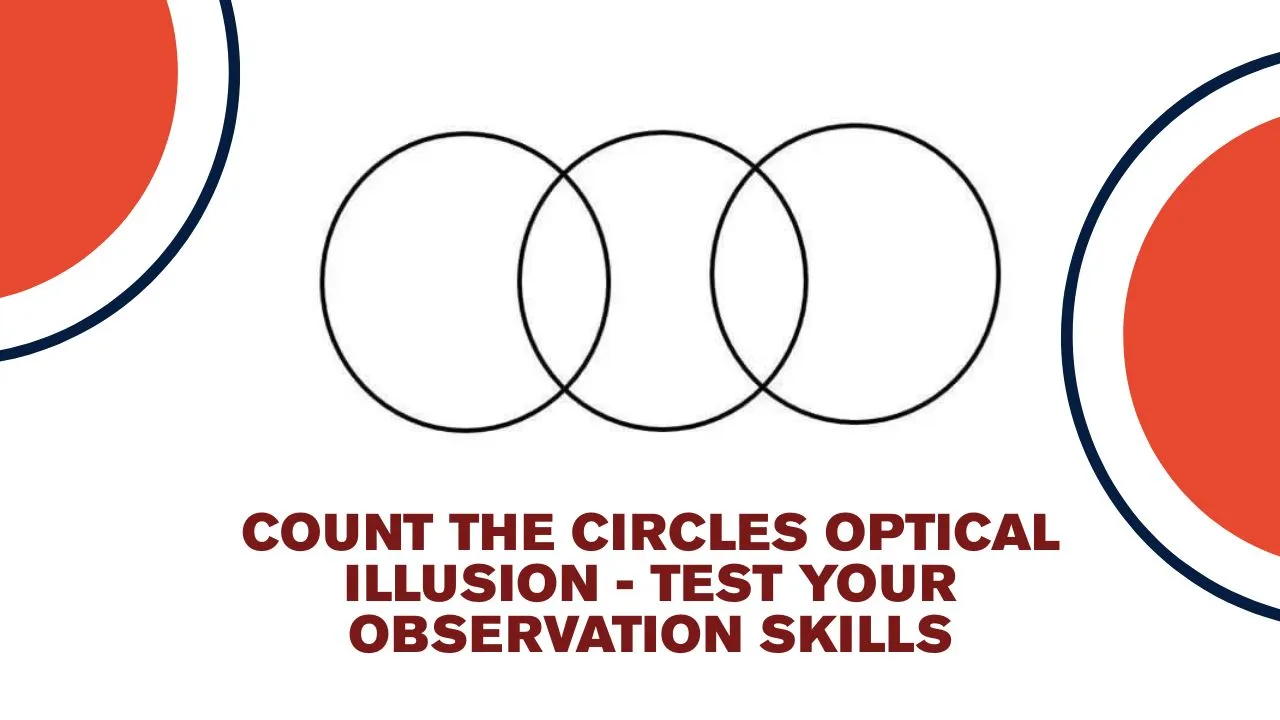Captivating visuals known as optical illusions deceive your mind into perceiving things that aren’t quite what they seem. A common kind of optical illusion is the circle illusion, in which a sequence of shapes, frequently stacked or interlaced, gives the impression that there are more or less pieces than there actually are. Not only are these illusions entertaining to solve, but they also provide information on how our brains interpret visual data.
This article will test your ability to see by presenting a well-known optical illusion involving the counting of circles. Although this can appear to be a simple exercise at first, the arrangement of the circles frequently causes the mind to deceive you into counting incorrectly. Now let’s explore the illusion and count the number of circles you can locate!
Contents
- 0.1 What Is Interesting About Optical Illusions?
- 0.2 The Challenge of Optical Illusion
- 0.3 Typical Errors in Counting Circles
- 0.4 How the Circle Illusion Can Be Solved
- 0.5 Related posts:
- 1 Can You Outsmart This Optical Illusion? Find 83 and 33 Hidden Among 38s in Just 8 Seconds!
- 2 Kalaignar Magalir Urimai Scheme 2025 – ₹1000 मासिक सहायता के लिए ऑनलाइन आवेदन करें
- 3 Challenge Your Brain: Can You Find the Hidden Letter A in 10 Seconds? Only 1% Can!
What Is Interesting About Optical Illusions?
Let’s first examine why optical illusions are so fascinating before moving on to the circle illusion. In essence, the brain creates certain assumptions based on prior experiences, which leads to optical illusions. Your mind attempts to make meaning of a visual that deviates from these expectations, which frequently results in bewilderment.
For instance, our brains may perceive overlapping or concealed circles that aren’t immediately visible when we view an optical illusion based on circles. We may miscount or completely miss some circles as a result of the forms or patterns distorting. The enigma is sometimes increased by the optical illusion, which can lead us to see the same circles in different ways.
The Challenge of Optical Illusion
Let’s now concentrate on the main task, which is to determine how many circles there are in the illusion. Your objective is to count each individual circle in the image, which may contain a complex arrangement of lines and overlapping patterns. The arrangement can be challenging, though, as some circles may initially appear to be squares or other forms, and some may even appear to be a portion of other shapes.

Patience and attentive observation are essential for resolving this optical illusion. It may appear impossible to determine the number of circles, and you may even notice that the numbers change with each try. Your brain may interpret the circles differently if they are layered or appear in varying sizes. It’s crucial to pay attention to every aspect of the picture and refrain from making snap judgments.
Typical Errors in Counting Circles
You’re not the only person who has struggled to count the circles in this optical illusion. When tackling this kind of challenge, keep an eye out for the following typical pitfalls:
- Overlapping Circles: It can be difficult to count the circles in the illusion independently since many of them may overlap. You may overlook smaller, distinct circles because your brain may merge overlapping portions into a single, bigger circle.
- Hidden Circles: Some circles might be concealed by other forms or partially occluded. These can be difficult to identify, particularly if the circle is imbedded in the lines or only partially visible.
- Various Sizes: Larger circles can obscure smaller ones in a variety of circle illusions due to their varying sizes. Your mind may be led to believe that there are less circles than there actually are by this disparity in size.
- Your Brain’s Assumptions: As previously stated, your brain may draw certain conclusions from past trends. This may cause you to miss shapes that are there or perceive shapes that aren’t. Accurately counting the circles requires patience.
How the Circle Illusion Can Be Solved
The circle illusion may appear difficult at first, but it can be solved by being meticulous and slow. The following procedures will assist you in precisely counting the circles:
- Commence at the top: Start by looking at the upper part of the picture and proceed methodically downward. In this manner, you may concentrate on each region separately and avoid missing any circles.
- Pay Attention to Overlaps: Take note of any circles that overlap. Even though they have similar edges, it could be useful to count them as distinct circles. Note which of these you have already counted.
- Seek Out Hidden Circles: Within the larger circles, keep an eye out for smaller, hidden ones. Particularly if they are hidden by other shapes, these can be simple to overlook.

